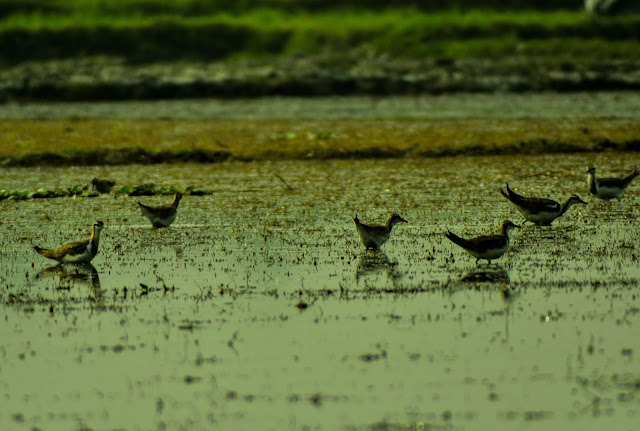During some weekends when life feels a bit distant and you
want to get closer to it, you need a quiet place that can listen to your rants
patiently and offer comfort that will soothe your nerves. Rambha, perched in the
northern tip of the largest brackish water lagoon in India, is exactly that
kind of a place.
It sits right beside the Eastern Ghats highway on the Orissa
– Vizag route and offers stunning glimpses towards the end of the drive.
Located at a distance of approximately 600kms from Kolkata, Rambha qualifies
for a pole position in the ‘top weekend destinations near Kolkata’ list. The
roads leading to Rambha are butter smooth and it only takes around 8 hours to
complete the drive.
Staying options are pretty much limited in Rambha. The best
place to stay and experience its beauty is the resort run by the Orissa Govt
Tourism Department, named ‘Panthaniwas’. Bookings can be made well in advance
through their online portal. For travellers going to Vizag from Kolkata,
Rambha is the ideal stop over destination.
Once, you’re in through the resort gates, you will be greeted with beautiful
gardens and a paved road done neatly in bright red and yellow bricks, that
takes you all the way down to the reception area. The air feels a bit moist on
your lips and you can’t help but be intrigued by the nearness of the sea.
The beauty of Rambha becomes imminent as soon as you cross
the last cottage of the property and walk along the wide, paved pier that stretches
right out into the blissful blue lagoon. Lonely boats are tied to bamboo poles,
swaying gently with the rhythm of the water. They seem to tell the story of the
fishermen who went into the sea insearch of a living and never came back.
Your vision is guarded by a hill that supports varied shades
of green thanks to the rich vegetation. You need to get on a boat in order to
explore the blue stretch. The boatmen will normally give you a good deal if you
bargain really well. A “package” that covers 4 islands at Rs.1200 is usually
considered a great deal !
As the boat makes its way through the calm waters, the cool
breeze lifts up your soul like magic. In the distance you can see a flock of
ducks readying up for a quick take off.
The boat crosses them and slowly ‘Breakfast
Island’ draws near. As per the boatmen, a British Lord used to go upto that
island every morning and have a round of classic English breakfast!

Next up is the Dinosaur island which gets its name from…yes! You guessed it correctly! The installation of a huge plastic dinosaur on the island has been a major setback for ornithologists and bird photographers because it scares away flocks of geese and other birds. However we were extremely lucky to spot a Brahminy Kite, gracefully perched on top of a dead tree branch.
Right next to
the dinosaur island, you will find a collection of rocks that are partially
covered by moss. They present an interesting contrast to the blue waters of the
lagoon. If you stare at them for sometime, even they seem to bob up and down
with the small waves. Peaceful hallucinations are ever so beautiful !
The tortoise island has an uncanny resemblance to a tortoise shell. From a
distance, it appears like an actual tortoise with its face down inside the
water. The boat usually stops at all these islands for you to get out and climb
up the rocks and explore the island.
As the boat turns back towards the pier, you long for it to
take a turn and go off into the narrow streak where the sea meets. It feels as
if you are ready to answer the summons of the countless sailors calling out to
you. They want you to live right there at the moment, getting drenched in the
calm, blue waters.
And you answer in the affirmative, once you're back in touch
with life, which by now is a little moist with the Chilka waters and memories
that flooded in with the sea and decided to stay back.
That is Rambha, Mon Amour !




















































